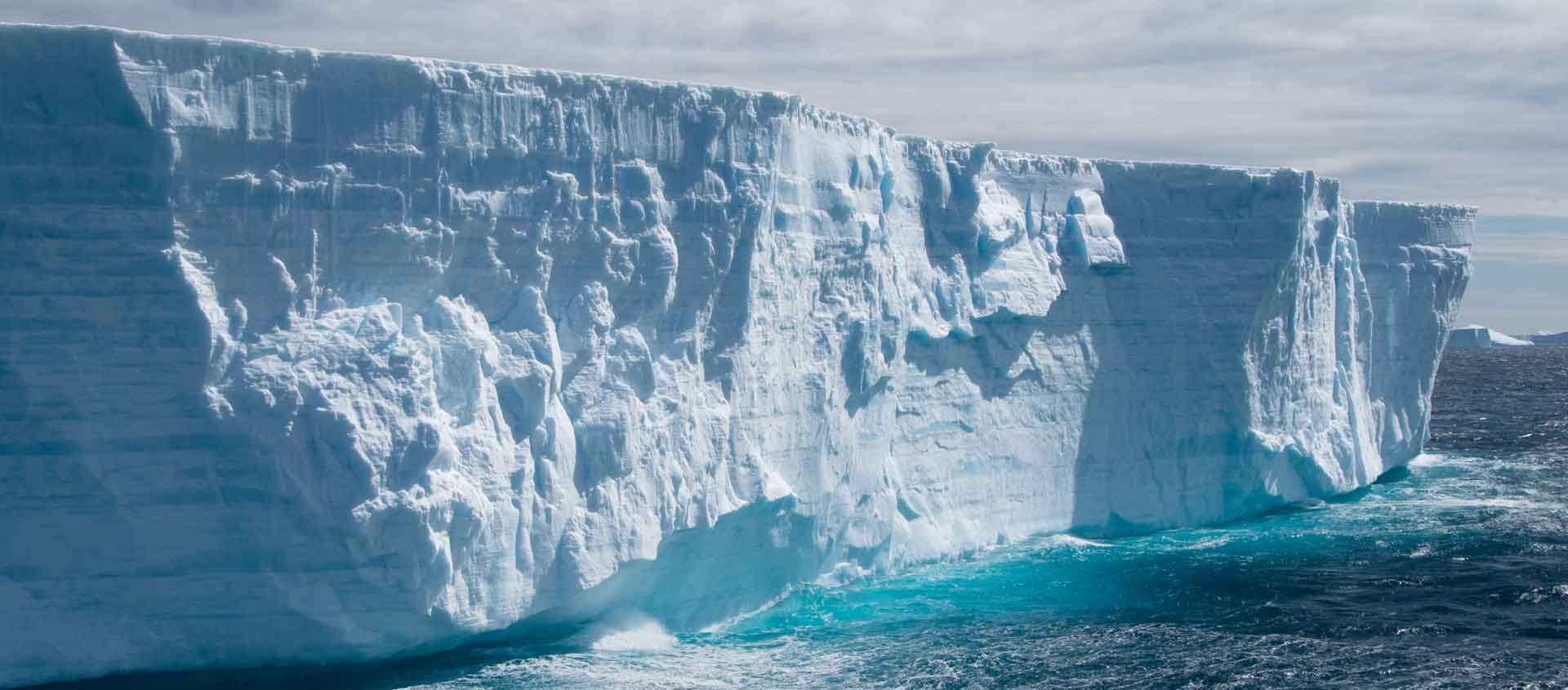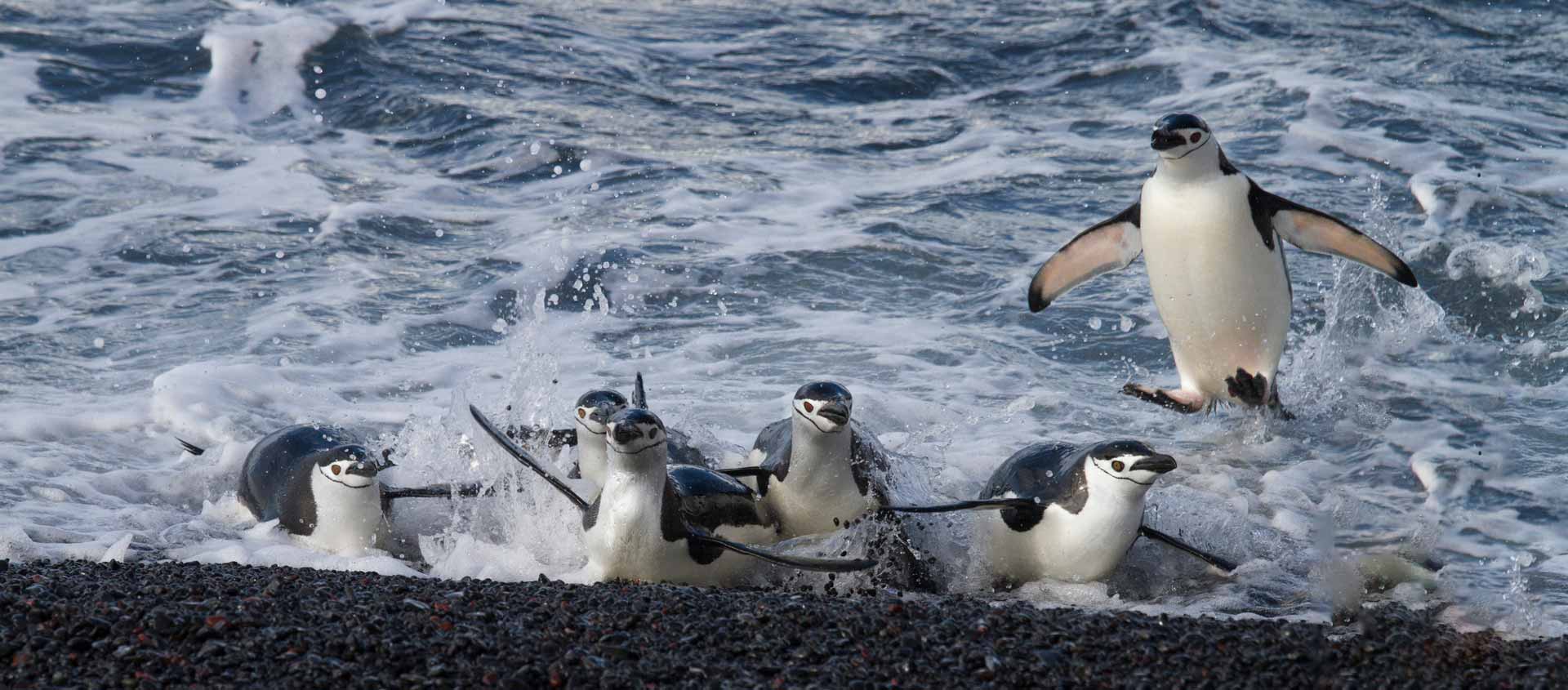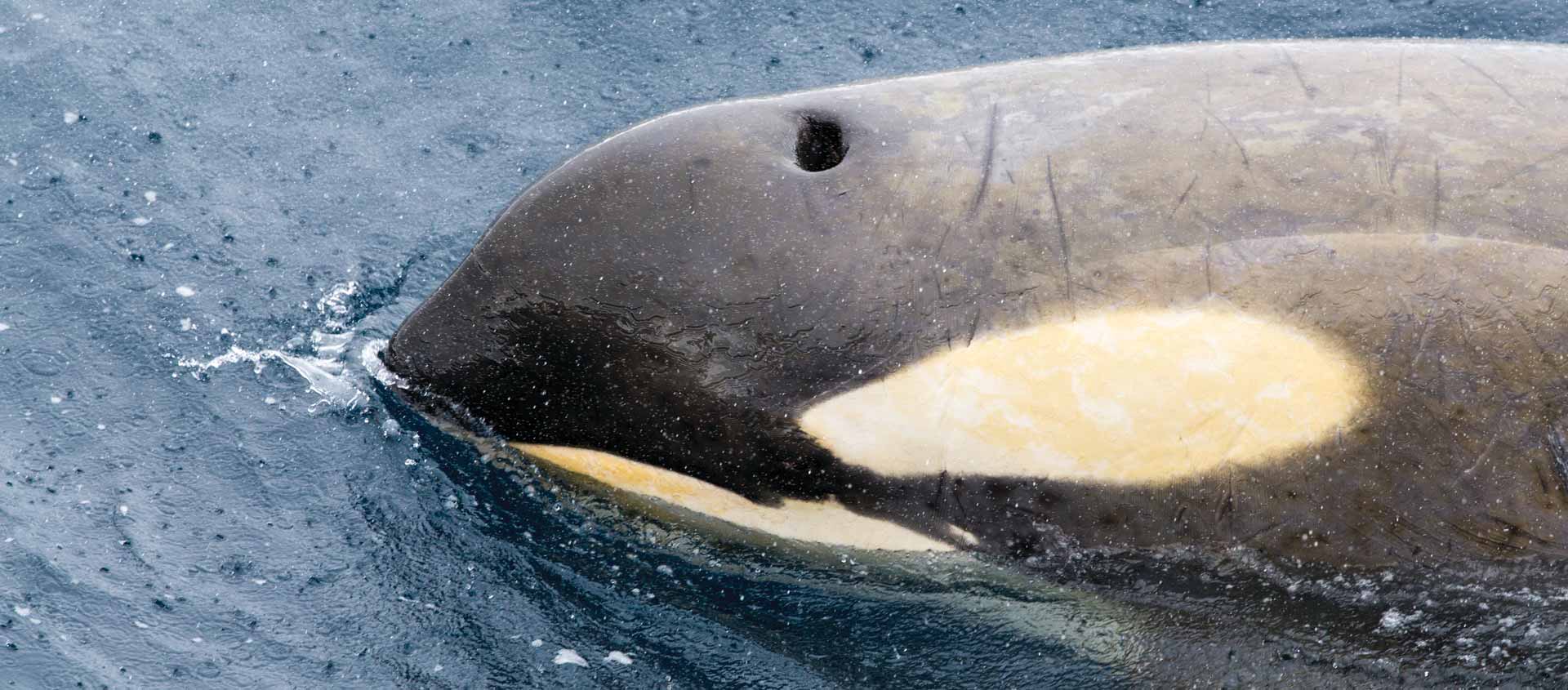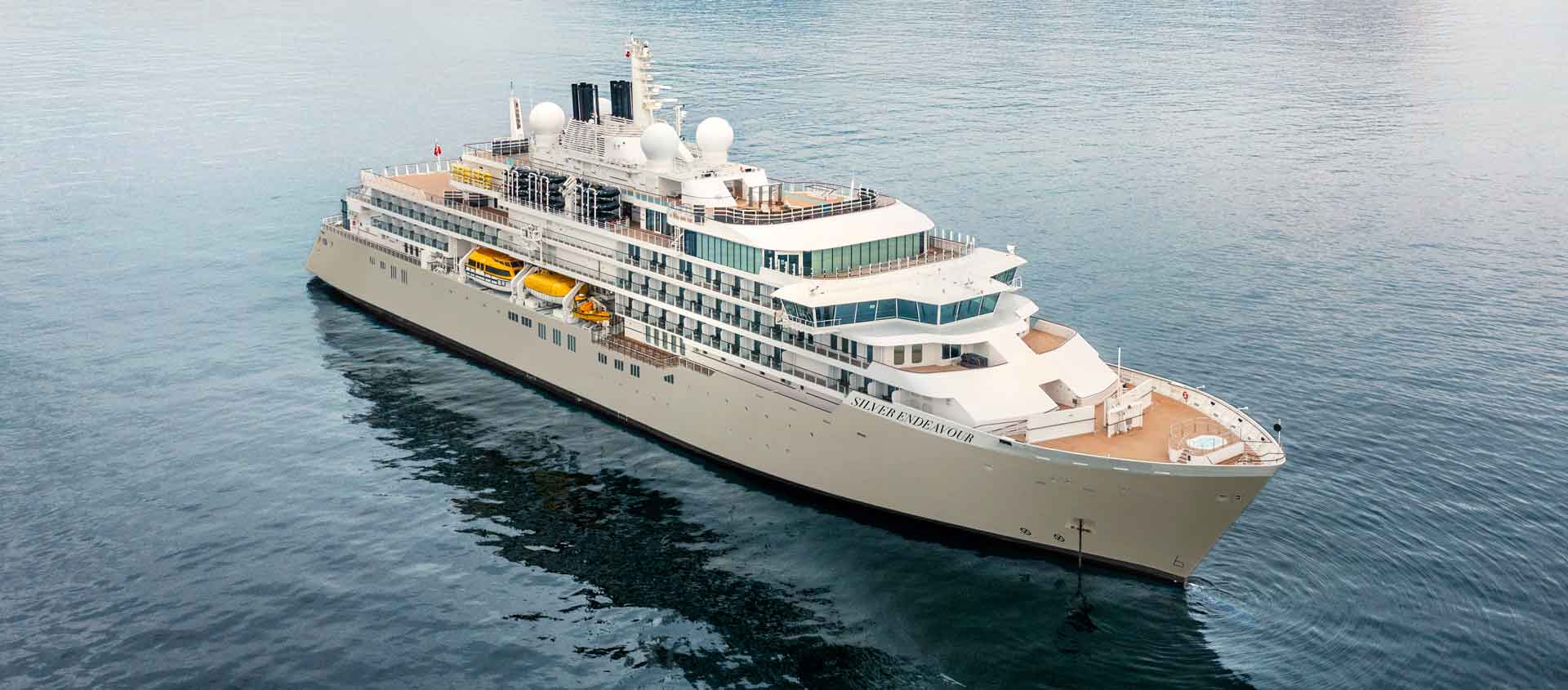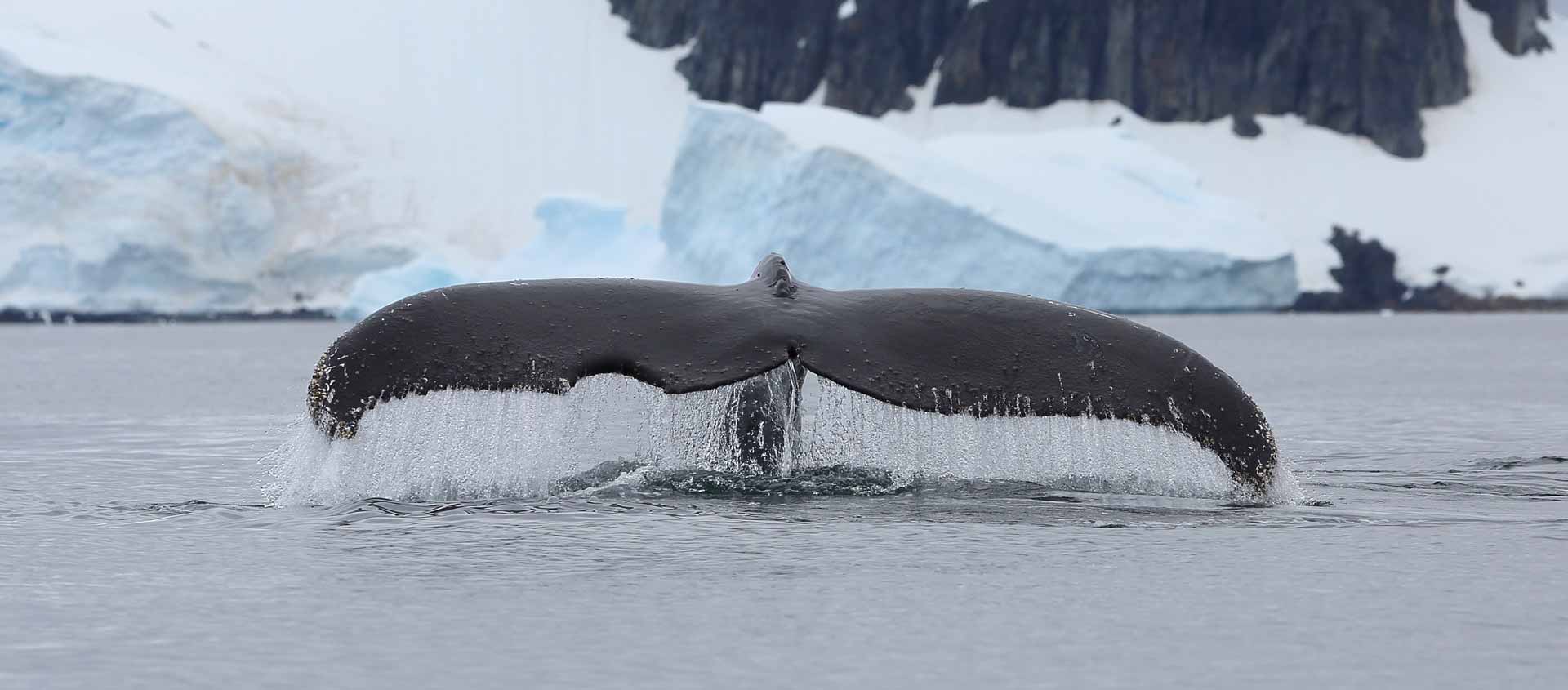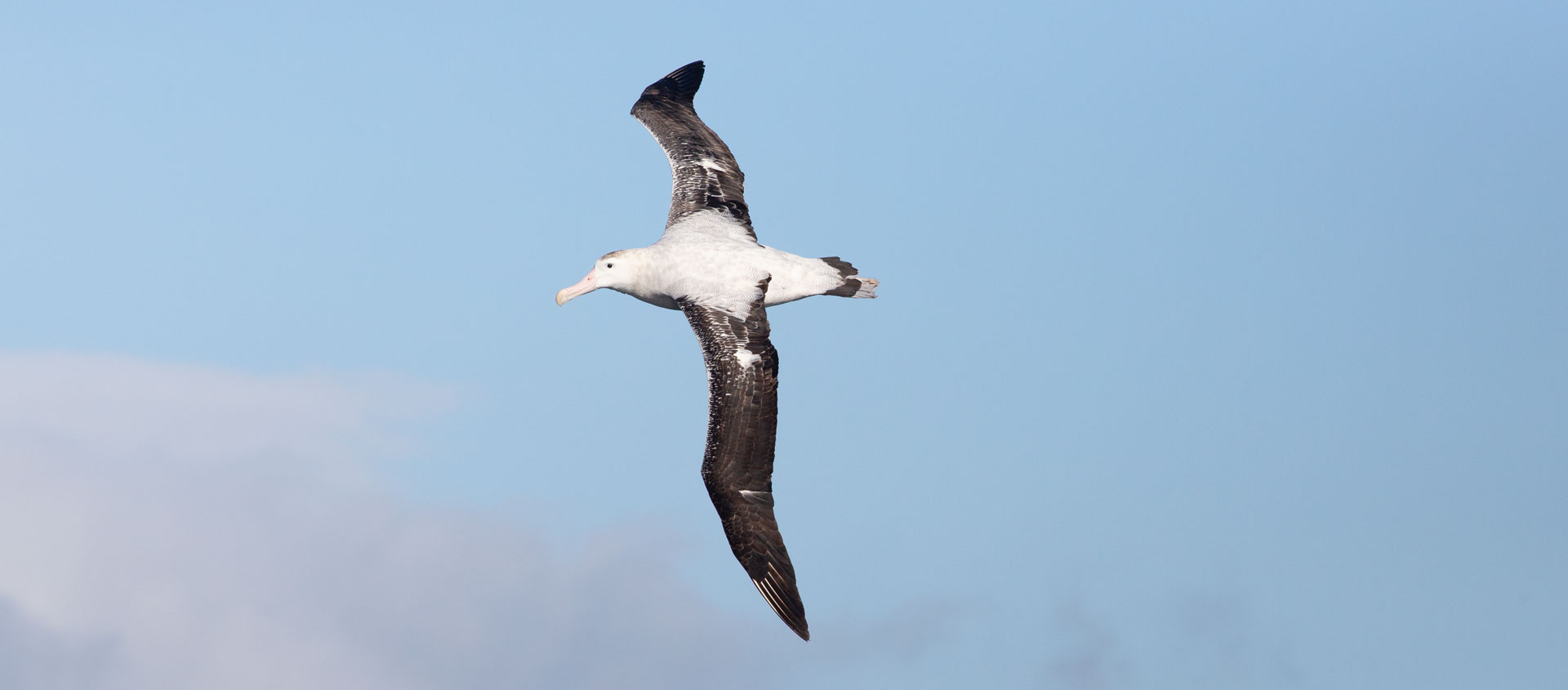Deep South Antarctica
onboard Silver Endeavour
Deep South Antarctica Cruise
Since ancient times, the name Antarctica has stood for the most remote and distant of all destinations, the literal end of the earth. But the advent of modern tourism has brought increasing traffic to the relatively-accessible northern part of the Antarctic Peninsula. Nowadays, to reach a truly pristine region, to experience the thrill of discovery, to see the White Continent as the early explorers did, you must venture farther. Beyond the established track lines, beyond the well-known landings, beyond the Circle, into the Antarctic Deep South. Join us on this 22-day adventure, stopping along the way at some favorite sites, but reserving a full seven expedition days for investigating the icy, wildlife-rich, island-strewn southern waters that very few travelers ever see. If you’ve never been to “The Ice”, this will be a true voyage of exploration. If you have, this trip will expand your horizons. If the idea of going beyond the ordinary in an extraordinary place appeals to you, join us in the Antarctic Deep South.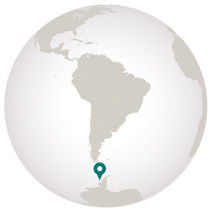
Destinations
- Travel by Air
- Travel by Road
- Travel by Boat
- Travel by Bullet Train
- Travel by Rail
- Travel by Dog Sled
- Day 1
- Day 2
- Days 3 & 4
- Day 5
- Days 6 & 7
- Days 8 & 9
- Days 10–16
- Days 17 & 18
- Day 19
- Days 20 & 21
- Day 22
-
Saturday, February 11: Arrive Santiago, Chile
Upon arrival in Santiago you will be met and transferred to your hotel. Relax at the hotel or take the afternoon to explore independently. This stately capital boasts superb museums, fine architecture, and gorgeous hilltop parks that dot the urban landscape. Enjoy a drink and snack at one of the many sidewalk cafés of Barrios Brasil, Lastarria and Bellavista. This evening, meet your fellow travelers and Apex expedition team over drinks and a welcome dinner at your hotel.
-
Sunday, February 12: Santiago / Puerto Williams / Embark Silver Endeavour
In the late morning, transfer to a private terminal and board your charter flight, with a catered lunch onboard, to the southernmost port in the world. Puerto Williams, on the shore of Isla Navarino overlooking the Beagle Channel, is ideally situated to be your jumping-off point. Here you meet your floating home for the next three weeks, the capable and luxurious Silver Endeavour. Be sure to be on deck with your binoculars looking out for Imperial Cormorants, South American Sea Lions, Southern Giant Petrels, and your first albatrosses, as you sail in the wake of Darwin and Fitzroy.
-
Monday & Tuesday, February 13 & 14: Drake Passage
By the time you awaken, you are passing Cape Horn, heading out into the legendary Drake Passage. When Francis Drake was blown helplessly past the Cape into open sea, he had no idea that he had entered a 600-mile-wide channel that separates South America from the Antarctic Peninsula. But based on his experience, he would not have been surprised to learn that these waters would one day bear an ominous reputation. All the wind and waves of the Southern Ocean roll through the gap as they encircle the Antarctic Continent—and assure its isolation.
As we make the fabled crossing, escorted by flurries of Pintado Petrels and aided by the Silver Endeavour’s excellent stabilizers, we will encounter the Antarctic Convergence, marking the zone where the frigid seawater emanating from the Antarctic ice meets the relatively warm sub-Antarctic water.
The Convergence is the ecological boundary of the Antarctic, and the waters beyond it are among the most productive on Earth. The residents of the South will make themselves known: White-chinned Petrels, Southern Fulmars, Wilson’s Storm-petrels, various whales, and the largest flying bird on Earth, the majestic Wandering Albatross. Between enlightening lectures, spend time on deck with your naturalists as the Antarctic surrounds you.
-
Wednesday, February 15: South Shetland Islands
By most standards, this rocky, ice-capped archipelago would not be deemed a welcoming sight. But after the watery wilderness of the Drake, our first landfall here is always a thrill. This is the Banana Belt of the Antarctic, and these islands feature the highest concentration of penguin colonies, seal haul-outs, flowering plants (both species!), and research stations within Greater Antarctica.
-
Thursday & Friday, February 16 & 17: Antarctic Sound
Antarctic Sound, between the tip of the Peninsula and the Joinville Islands, is where giant icebergs come to die. These are the great tabular bergs, which are an exclusive product of Antarctica. They are the largest moving things on Earth, ranging in size between a city block and a European country. The ones we find grounded here have sheared off the disintegrating Larsen Ice Shelf and drifted with the Weddell Gyre, only to finally spin off into the eddy behind the Peninsula.
The eastern end of the Sound is often choked with them, and the ship may have to thread her way between their towering walls, or may even be blocked entirely. Around them range the ice-dependent Antarctic Petrel and the ethereal Snow Petrel, and occasionally a stray Emperor Penguin.
Against this stark landscape, the great drama of the ill-fated Nordenskjold expedition played out. Here is the site of Hope Bay, home to the largest Argentine base and several seabird colonies. At places like Paulet Island and Brown Bluff are huge rookeries of Adélie penguins, here reaching their northern limit even as other penguin species are at their southern one. They will be our companions as we venture farther into the world of ice.
-
Saturday & Sunday, February 18 & 19: Antarctic Peninsula
The Peninsula extends like a beckoning finger towards the north, and it has always drawn explorers and travelers to its frozen shores. The eastern side, facing the Weddell Sea, is perpetually icebound—it was here that Shackleton’s Endurance was trapped and crushed. But the western shore opens up in the late summer and offers a corridor, sheltered by bands of islands, leading to the distant lands farther south. It also offers numerous exciting landings. Some, like Portal Point, on the continent itself, offer chances to hike to viewpoints, and to watch penguins in their daily routines. This time of year there are great congregations of marine mammals in places like Wilhelmina Bay, especially Humpback, Minke, and Fin Whales. Weddell and Crabeater Seals festoon the ice floes and huge Southern Elephant Seals plop themselves on beaches. Sinuous Leopard Seals patrol the edges of penguin colonies, alongside pods of Killer Whales.
Many of the early explorers plied this route, leaving in their wake place names, overwintering parties, stories of disaster, and, later, permanent bases. Conditions permitting, we may stop to visit one of those research stations to meet the personnel and see the multinational scientific activities taking place.
Ice is everywhere, in the form of jagged pinnacled bergs calved off the glaciers that line the shore. Not only do they come in more shapes than you would imagine; they come in more shapes than you can imagine…as Zodiac exploration in places like Neko Harbor and the aptly-named Paradise Bay will demonstrate. The prevalence of ice will also influence our plans, along with weather and wildlife activity, but this time of year, narrow channels like the Lemaire and Errera, both otherworldly in their beauty, should be open to us.
-
Monday–Sunday, February 20–26: Expedition in the Deep South
Flexibility is the key to expedition travel as you take advantage of Mother Nature’s whims. Weather and ice conditions will not only determine, but will also frequently change, our plans in this wild region. They often also point us in new directions and give us a reason to explore new areas. Places we will aim for include:
Of all the imaginary geographic lines on the face of the globe, the Antarctic Circle is the hardest one to reach. It marks the point at which, for at least one day at the height of the southern summer, the sun never sets. Beyond it, the time span of the midnight sun continues to increase. To a geographer, it delineates the official boundary of the Antarctic, although you will feel like you’ve already been there for some time. You will not see it (though some have claimed to feel a bump as the ship crosses over it), but you will toast your successful passage with champagne on deck. You are now in an extraordinary region where few humans have ever ventured.
Established by the British as Faraday Station after WWII, this research base was later sold to Ukraine for one pound sterling, becoming Vernadsky Station. Aside from their scientific mission, the new owners created “The Best Bar in the Antarctic”, complete with a pool table and serving homemade vodka. The surrounding Argentine Islands make for lively Zodiac excursions, while on nearby Winter Island lies a hut built by Shackleton expeditioner James Wordie for magnetic observations.
The “crystal” in Crystal Sound is ice, with which it is sometimes filled to overflowing, and at the mouth of it sits tiny Detaille Island. It accommodates a small colony of Adélie Penguins, but its main attraction is the remains of Base W. Built by the British, it was intended to serve as a base for dogsled journeys to the mainland. However, sea ice conditions in the Sound turned out to be too unreliable to allow safe crossings, and in 1959 orders came to abandon the base. But when the relief ship arrived to pick the men up, that unreliable ice had packed in so tightly that the ship couldn’t get closer than 50 miles. The men were ordered to bug out immediately, take to the ice, and walk to the ship, bringing only what they could carry on their backs. They left behind a host of artifacts, a time capsule of their life and of a particular era in Antarctic exploration, eerily preserved to this day.
The narrow channel known as The Gullet, first transited by Jean-Baptiste Charcot’s expedition in 1909, leads south into Marguerite Bay between Adelaide Island and Graham Land on the mainland. It is a passage through soaring peaks draped with glaciers that descend to the sea on either side—like an alleyway through an ice palace. Seals litter flat sea-ice floes, while the sloping sides of glacial bergs will harbor resting Adélie Penguins…and quite possibly a few drifting Emperors.
Pourquoi Pas Island, in northern Marguerite Bay, is named for Charcot’s able vessel…and who but a Frenchman would name his ship the “Why Not?” This mountainous ice-clad island is known for its narrow fjords and lofty peaks, but also hosts a very active Adélie Penguin colony. Tiny, feisty Adélies are the quintessential penguin, sporting the classic portly-gentleman-in-evening-dress look. There is never a dull moment at an Adélie colony, with its residents continually squabbling, calling for their mates, demanding food from their parents, and stealing pebbles from their neighbors. Despite their comical demeanor, they are serious survivors, nesting farther south than any other penguin—even the much-larger Emperors.
-
Monday & Tuesday, February 27 & 28: Antarctic Peninsula
This far south, the season is already growing late. So we turn back towards the north, passing again through these prolific waterways. Along the Peninsula there are many passages, many islands, landings, research stations, penguin colonies, whale feeding grounds, seal haul-outs…and overall, many possibilities for our return journey.
-
Wednesday, March 1: South Shetlands
Sailing up through the Bransfield Strait, we enter the archipelago at a different point, giving ourselves another chance to locate any species of penguin, seal, or seabird we may have missed, before finally launching off into open water again.
-
Thursday & Friday, March 2 & 3: Drake Passage
On the return voyage, all the creatures we met on the way south make their farewell appearances—first the Antarctic species, then the sub-Antarctic, then the Fuegian—with a few new ones probably popping up. Meanwhile, the lecture team tries to sum up the voyage, make sense of an overwhelming array of experiences, and put it all in perspective.
-
Saturday, March 4: Puerto Williams / Santiago / Homeward
With the mountains of Tierra del Fuego as a fittingly dramatic backdrop, our epic voyage comes to an end back in Puerto Williams. There is time for goodbyes as you board your charter flight to Santiago and continue on to international flights home.

